
SCIENCE HERO:
DR. EDWARD JENNER
by Tomas from Fredericksburg
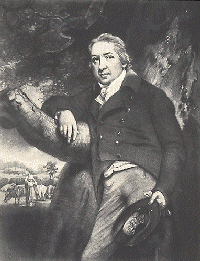 When choosing a hero, one has to think very carefully and search throughout the depths of their mind. Sometimes it is not what one’s hero has accomplished one admires, but rather it is the hero’s feelings and traits that one prefers over others. Also, it is important how they accomplished things, with what methods they used and such. For example, some may prefer things done with words instead of force. These are all the steps I had to take to find out what my hero would be like. I found that one who was a leader made for a respectable hero. Also, he or she needed to be a good problem solver and needed to overcome scientific or political issues or boundaries in their lifetime. He or she had to be productive, beneficial, and a quick thinker. Thusly, my hero would have to be a great inspiration to a person interested in the field of science or arithmetic. Whatever my hero strove for, it had to be something that could help the world work towards a beneficial future. Dr. Edward Jenner was born in the town of Berkeley, Gloucestershire of England on the 17th of May, 1749. He lived through a tragic childhood, for at the age of five both of his parents passed away. Jenner was raised by his sister, who was to marry the soon-to-be vicar Reverend G. C. Black (Jenner’s father had been the vicar of Berkeley before he passed). While growing up, Jenner expressed a high amount of interest towards rural topics and country matters. He often visited the Severn River to collect shells and anything else that caught his eye. As he grew older, this simple interest blossomed into a thirst for medical and basic scientific study. He was inoculated to smallpox in his preteens, pushing his medical interest even further. After being schooled in Wotton-under-Edge and Cirencester, he became an apprentice to the wise Dr. Daniel Ludlow. Through Ludlow, he gained the initial experience needed to be a surgeon. But later, in 1770, he moved to London, seeking the famous John Hunter, an excellent surgeon and experimentalist. He quickly developed a strong relationship with Hunter as he and Jenner became very good friends amongst the study of the human anatomy and medical sciences. After three years of training under Hunter, Jenner moved back to Berkeley and became the local practitioner and surgeon, which was very convenient to the townspeople and ill travelers.
Smallpox is a disease triggered by the viral strain variola. It enters the body through the lungs and is carried in the blood to the internal organs, which the virus periodically infects. Later in the sequence, the virus spreads to the skin, which breaks out in a hideous rash. It is characterized by several symptoms: fever, headache, backache, and vomiting (twelve days after exposure). In less serious cases, the rash occurs, starting out small, then the pustules grow larger until they are intensified blisters, then they retreat and leave deep scars in the victims skin. In more sever cases (much more common) the victim usually dies of internal bleeding or more secondary infections. It was a very common disease in different eras, climbing to “epidemic” class over time. It was extremely contagious and deadly, and most cities frantically searched for a cure or prevention. In this frantic search, Jenner began his quest for the cure of smallpox. It started with Jenner giving common inoculations (specifically called variolations for the specific strain of the smallpox virus, hence variola). By drawing blood from his patients and deliberately giving them smallpox under the right body conditions, the patients were quarantined in stables and therefore gave their systems a chance to develop immunity. With the process being very brutal, and sometimes fatal, Jenner strived for a more efficient and safe method. This led him to using cowpox as a solution. He discovered cowpox, a mild viral infection of bovines, which was a simpler strain of variola. This virus merely caused outbreaks on the hands instead of the gruesome rash and such, therefore was safer to use on patients and more effective, giving the body a better chance to overcome this weak virus and build up an immunity to the strain. He called this process vaccination, after the Latin word vacca meaning “from a cow”. Some protested against his method and refused to be vaccinated, mostly because some thought the “white man” were the ones who made the disease the problem in the first place. But, Jenner’s innovative method eventually put an end to the epidemic of smallpox once and for all, even though very mild cases still occur.
|
| Written by Tomas from Fredericksburg |
*Internet Required to view links* The Jenner MuseumA great source for information on Jenner's life, careers, and accomplishments.Dr. Edward Jenner and the Smallpox VaccinationA brief essay on Dr. Edward Jenner. The CotswaldsA brief description of Dr. Edward Jenner. Another story about Dr. Jenner |
 |  | 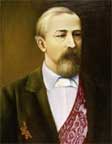 |  |
| Alan Turing laid the theoretical groundwork for the first computer. | Albert Einstein believed in the power of imagination. | Alexander Borodin was an accomplished chemist, composer and staunch advocate of women's rights. | Ameen Abdulrasool is a young inventor who developed a portable navigation system for the blind. |
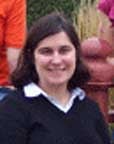 |  |  |  |
| Amy Charkowski works on the front lines of protecting Earth's food supply. | Andrea Mia Ghez is an astrophysicist best known for her discoveries about the black hole at the center of our galaxy. | Ariel Ruiz i Altaba Scientist - Photographer combines art and science to research how cells are generated and formed. | Audrey Penn: Just Do It is a medical doctor who has devoted herself to studying diseases that affect muscle control. |
 |  |  | 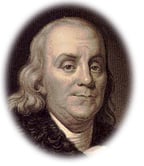 |
| Augusta Ada Byron developed the world's first computer program while struggling with her own personal hardships. | Barbara McClintock a distinguished geneticist and Nobel laureate | Ben Carson is the chief of neurosurgery at Johns Hopkins University Hospital. | Benjamin Franklin was an inventor, diplomat, writer, and a huge influence on American history. |
 |  |  |  |
| Beth Rickard Environmentalist is an advocate of solar as the energy of the future. | Charles Darwin is the father of modern biology. | Chiaki Mukai is the first female Japanese astronaut. | Christiane Nusslein-Volhard is a Nobel Prize winner and pioneer genetic researcher. |
 |  |  |  |
| Claudia Gerwin: Keeping the Neurons Firing researches how nerve cells relay messages to each other. | Clifford V. Johnson is a string theorist who studies the makeup of the smallest particles of the universe. | Connie Samaras has created media archives for deep space voyages. | Courtney Schumacher is an atmospheric scientist and educator committed to mentoring young women interested in science. |
 |  |  |  |
| Cristina Diaz: Biologist studies intertidal and tropical sponges. | Dame Cicely Saunders founded the modern hospice to provide compassionate, holistic care to the dying. | Darlene Ketten studies stranded whales and dolphins. | Debbye Turner became Miss America and pursued her dream to become a veterinarian. |
 |  |  |  |
| Dilfuza Egamberdiyeva Environmental Microbiologist cares for the Earth's soil, researching ways to produce microbes to control plant diseases. | Dr. Alexander Langmuir Langmuir's work in epidemiology has saved millions of lives. | Dr. Barbara Ross-Lee became the first African American woman dean of a US medical school. | Dr. Caldicott has been a lifelong anti-nuclear activist. |
 |  |  |  |
| Dr. Edward Jenner discovered the vaccine. | Dr. Elizabeth Kalko and the Jason Project studies bats in the Panamanian rainforest. | Dr. Elvia Niebla Soil Scientist is dedicated to soil conservation. | Dr. France Cordova is a renowned astrophysicist who has broken gender and cultural barriers. |
 |  |  |  |
| Dr. Gloria WilderBrathwaite was inspired to provide health care to the poor in the innner city. | Dr. Govindappa Venkataswamy cares for the eyes of millions of people in India. | Dr. Inés Cifuentes Seismologist works to improve science programs for students in Washington, DC. | Dr. Karen Plaut has been a pioneer in animal science research. |
 |  |  |  |
| Dr. Kay Jamison is both an expert on, and a sufferer of, Bipolar Disorder. | Dr. Kristi Curry-Rogers is an accomplished paleontologist who travels the globe in search of dinosaur digs. | Dr. Michael DeBakey is the father of modern open-heart surgery. | Dr. Patch Adams gives the practice of medicine a humorous twist. |
 | 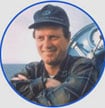 |  |  |
| Dr. Richard Murphy Marine Biologist educates others about the sea and ways to protect the oceans for the future. | Dr. Robert Ballard and the JASON project bring scientific exploration to children around the world. | Dr. Rosalie Bertell Anti-Nuclear Nun is a renowned scientist, eco-feminist and peace activist. | Dr. Sara W. Lazar Neuroscientist - Meditator researches the effects of meditation on the brain. |
 | .jpg) |  |  |
| Dr. Sue Savage-Rumbaugh is a scientist dedicated to the study and conservation of bonobos. | Dr. Susan Love is committed to women's health issues. | Dr. Zeda Rosenberg is working to provide women with a way to protect themselves from contracting HIV/AIDS. | Enrico Fermi was one of the 20th century's greatest physicists. |
 |  |  |  |
| Erich Jarvis observes song birds and uses his training with molecular biology to learn about brain behavior. | F. Sherwood Rowland discovered the 'greenhouse effect.' | Fati Kirakoya: L'Oreal-UNESCO, Women in Science Fellow is a researcher committed to helping find solutions to end the AIDS crisis. | Frederick Banting was the co-discoverer of Insulin. |
 |  |  |  |
| Friends of the Sea Lion rescue, treat, and release these mammals back into the ocean. | Gail Kaaialii: Biologist investigates the origins of life and helps others value all life forms. | Galileo was the first to use a telescope to observe the stars and planets. | George Washington Carver is famous for experimenting with plants. |
 |  |  | 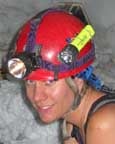 |
| Gertrude B. Elion developed the AIDS drug, AZT. | Gina Gallant is an inventor whose passion is protecting the environment. | Grace Murray Hopper was a computer visionary. | Hazel Barton combines her passion for caving with researching microbes. |
 |  |  |  |
| Irene Ayako Uchida helped find the link between radiation and birth defects. | Irene Curie specialized in nuclear physics, the science of studying the nucleus of the atom. | Jack St. Clair Kilby invented the microchip. | Jane Mt. Pleasant is an agricultural scientist who looks to the past to meet today's farming needs. |
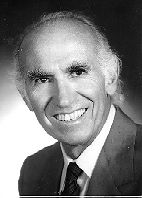 |  |  |  |
| Jonas Salk discovered the polio vaccine. | Kathy Sullivan was the first American woman to walk in space. | Leonard Adleman improves lives with his work in DNA technology. | Leonardo da Vinci was an artist and a scientist ever curious of the world around him. |
 |  |  | 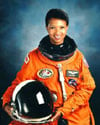 |
| Louis Pasteur 's discoveries advanced the practice of medicine. | Luz Maria Rodriguez-Fernandez conducts cancer research to help understand the disease process. | Madame Curie received the Nobel Prize for her discovery of Radium. | Mae Jemison dreamed of going to space since childhood. |
 |  |  |  |
| Magdalena Hurtado is an anthropologist who studies the Ache people of Paraguay. | Marie Curie discovered radioactivity as an atomic property, opening the door to 20th century science. | Meenakshi Wadhwa studies meteorites and the processes involved in their formation. | Nikola Tesla was the father of many modern inventions. |
 |  |  |  |
| Orville and Wilbur Wright were brothers determined to build a better flying machine. | Paul Farmer has dedicated his life to treating people in the poorest nations in the world | Paul Munsen Solar Oven Man manufactures sun ovens, which harness the sun's rays to provide an environmentally safe source of energy. | Paul Sipiera led an expedition into Antarctica to find meteorites for NASA. |
 |  |  |  |
| Philo T. Farnsworth ,the inventor of the television. | Robert Koch was an important medical researcher of the 19th century. | Rokhaya Gueye treats malaria and raises awareness about women's health issues in Senegal. | Shannon Hackett studies the genetic diversity and evolution in tropical birds. |
 |  |  |  |
| Sir Alexander Fleming : his discovery of penicillin saved millions of lives. | Srinivasa Ramanujan made groundbreaking contributions to mathematics. | Stephanie Jenouvrier UNESCO-L'Oreal Women in Science Fellow is a population ecologist researching the effects of climate change on emperor penguins. | Stephen Hawking is a renowned theoretical physicist who writes about 'black holes'. |
 |  |  |  |
| Tania Ruiz is an astrophysicist committed to science education and helping women reach their goals. | Thomas Alva Edison holds the record for number of patents filed. | Tom Chau Biomedical Engineer uses science and technology to maximize opportunities for people with disabilities. | Tom Dibblee is a legendary geologic mapper. |
 |  | 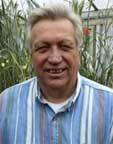 |  |
| Usha Varanasi is the first woman to lead a Fisheries Science Center. | Vladimir Kosma Zworykin is called 'The Father of Television'. | Wes Jackson was a professor who returned to the land to advance sustainable agriculture practices. | Wilson Bentley was the first person to photograph a single snowflake. |
 |  | ||
| XIV Argonauts broadcasted their explorations of the Channel Islands. | Zohra Ben Lakhdar is a physicist from Africa who does research on atomic spectroscopy. |
Last changed on: 4/15/2003
|
angel | animals | artists | business | child | community | earthkeepers |explorers | faith | family | freedom | lifesavers | literary | musician | heroes in the news | peacemakers | poets | scientists | sports | teachers | women | writers |
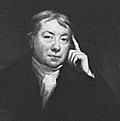 As a general practitioner, he faced many illnesses and patients, and his doctoring proved very effective against their ailments. He would always do his best to aid another. Once, he even braved a blizzard to get to a very sick patient and nearly lost his life due to over-exposure. He also made a very productive surgeon and saved many lives. In addition to doctoring, he still had much interest in geology, specifically fossils. Despite his huge medical career, he made a dynamic find in uncovering the remains of a Plesiosaur, a prehistoric dinosaur. His thoughts of geology expanded more and more until his main interests were doctoring and geology. His extra-curricular thoughts were always an inspiration to others, triggering many geological and fossil-related finds and discoveries. Jenner achieved many things, such as his study of the cuckoo bird and his eventual acceptance into the Royal Society, making him a “Fellow” of the Royal Society. But, his greatest achievement is that of the vaccination of smallpox and the later eradication of the disease itself.
As a general practitioner, he faced many illnesses and patients, and his doctoring proved very effective against their ailments. He would always do his best to aid another. Once, he even braved a blizzard to get to a very sick patient and nearly lost his life due to over-exposure. He also made a very productive surgeon and saved many lives. In addition to doctoring, he still had much interest in geology, specifically fossils. Despite his huge medical career, he made a dynamic find in uncovering the remains of a Plesiosaur, a prehistoric dinosaur. His thoughts of geology expanded more and more until his main interests were doctoring and geology. His extra-curricular thoughts were always an inspiration to others, triggering many geological and fossil-related finds and discoveries. Jenner achieved many things, such as his study of the cuckoo bird and his eventual acceptance into the Royal Society, making him a “Fellow” of the Royal Society. But, his greatest achievement is that of the vaccination of smallpox and the later eradication of the disease itself.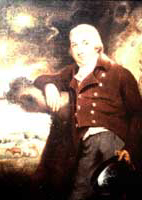 Jenner’s work was so fantastic, that hundreds of thousands of people admired him for his discovery, as well as many prominent societies and colleges. Even during the war between Britain and France, the great Napoleon, when Jenner asked him to release some British prisoners of war, replied, “Ah, Jenner, I can refuse him nothing.” Napoleon, being an enemy of Jenner’s country, even minted him a specialized medal commemorating him for his solution to the smallpox issues. In his time, Jenner became a significant leader in the field of science, inspiring many to expand their ideas. I also think it was admirable of him to have extracurricular studies of geology and birds, specifically the cuckoo. His leadership is what I admire him for mostly, but there are many other things. By excelling in productivity and quick thinking, he accomplished the unthinkable by creating a vaccination for smallpox, proving highly beneficial to society. Think of what the world would be like with the smallpox virus untamed. People would still be isolating or even burning corpses, being extra careful of contact with others, and basically just fearing infection of smallpox every moment of their lives. We owe Jenner so much for his leadership, productivity, and his quick thinking, and I am proud to admire him as my true hero.
Jenner’s work was so fantastic, that hundreds of thousands of people admired him for his discovery, as well as many prominent societies and colleges. Even during the war between Britain and France, the great Napoleon, when Jenner asked him to release some British prisoners of war, replied, “Ah, Jenner, I can refuse him nothing.” Napoleon, being an enemy of Jenner’s country, even minted him a specialized medal commemorating him for his solution to the smallpox issues. In his time, Jenner became a significant leader in the field of science, inspiring many to expand their ideas. I also think it was admirable of him to have extracurricular studies of geology and birds, specifically the cuckoo. His leadership is what I admire him for mostly, but there are many other things. By excelling in productivity and quick thinking, he accomplished the unthinkable by creating a vaccination for smallpox, proving highly beneficial to society. Think of what the world would be like with the smallpox virus untamed. People would still be isolating or even burning corpses, being extra careful of contact with others, and basically just fearing infection of smallpox every moment of their lives. We owe Jenner so much for his leadership, productivity, and his quick thinking, and I am proud to admire him as my true hero.